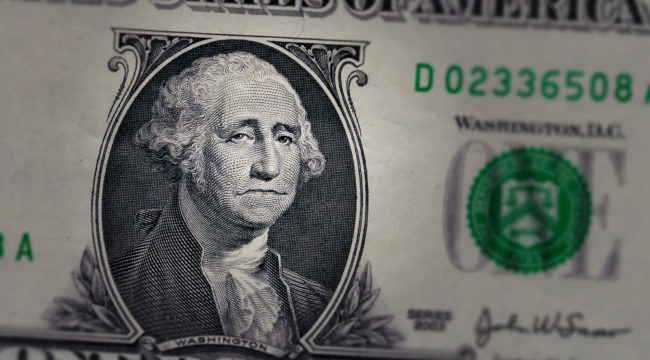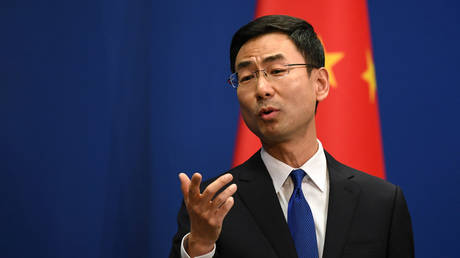A Recession Is Coming… And the Fed Can’t Stop It
by Jim Rickards, Daily Reckoning:
 Is the Fed ready for the next recession?
Is the Fed ready for the next recession?
The answer is no.
Extensive research shows that it takes between 300 and 500 basis points of interest rate cuts by the Fed to pull the U.S. economy out of a recession. (One basis point is 1/100th of 1 percentage point, so 500 basis points of rate reduction means the Fed would have to cut rates 5 percentage points.)
Right now the Fed’s target rate for fed funds, the so-called “policy rate,” is 1.75%. How do you cut rates 3–5% when you’re starting at 1.75%? You can’t.
Negative interest rates won’t save the day. Negative rates have been tried in Japan, the eurozone, Sweden and Switzerland, and the evidence is that they don’t work to stimulate the economy.
The idea of negative rates is that they’re an inducement to spend money; if you don’t spend it, the bank takes it from your account — the opposite of paying interest. Yet the evidence is that people save more with negative rates in order to meet their lifetime goals for retirement, health care, education, etc.
If the bank is taking money from your account, you have to save more to meet your goals. That slows down spending or what neo-Keynesians call aggregate demand. This is just one more example of how actual human behavior deviates from egghead theories.
The bottom line is that zero means zero. If a recession started tomorrow, the Fed could cut rates 1.75% before they hit zero. Then they would be out of bullets.
What about more quantitative easing, or “QE”? The Fed ended QE in late 2014 after three rounds known as QE1, QE2 and QE3 from 2008–2014. What about QE4 in a new recession?
The problem is that the Fed never cleaned up the mess from QE1, 2 and 3, so their capacity to run QE4 is in doubt.
From 2008–2014, over the course of QE1, 2 and 3, the Fed grew its balance sheet from $800 billion to $4.4 trillion. That added $3.6 trillion of newly printed money, which the Fed used to purchase long-term assets in an effort to suppress interest rates across the yield curve.
The plan was that lower long-term interest rates would force investors into riskier assets such as stocks and real estate. Ben Bernanke called this manipulation the “portfolio channel” effect.
These higher valuations for stocks and real estate would then create a “wealth effect” that would encourage more spending. The higher valuations would also provide collateral for more borrowing. This combination of more spending and lending was supposed to get the economy on a sustainable path of higher growth.
This theory was another failure by the eggheads.
The wealth effect never emerged, and the return of high leverage never returned in the U.S. either. (There is a lot more leverage overseas in emerging-market dollar-denominated debt, but that’s not what the Fed was hoping for. The EM dollar-debt bomb is another accident waiting to happen that I’ll explore in a future commentary.)
The only part of the Bernanke plan that worked was achieving higher asset values, but those values now look dangerously like bubbles waiting to burst. Thanks, Ben.
The problem now is that all of that leverage is still on the Fed’s balance sheet. The $3.6 trillion of new money was never mopped up by the Fed; it’s still there in the form of bank reserves. The Fed has begun a program of balance sheet normalization, but that program is not far along. The Fed’s balance sheet is still over $4 trillion.
That makes it highly problematic for the Fed to start QE4. When they started QE1 in 2008, the balance sheet was $800 billion. If they started a new QE program today, the they would be starting from a much higher base.
The question is whether the Fed could take their balance sheet to $5 trillion or $6 trillion in the course of QE4 or QE5?
In answering that question, it helps to bear in mind the Fed only has $40 billion in capital. With current assets of $4.4 billion, the Fed is leveraged 110-to-1. That’s enough leverage to make Bernie Madoff blush.
To be fair to the Fed, their leverage would be much lower if their gold certificates issued by the Treasury were marked to market. That’s a story for another day, but it does say something significant about the future role of gold in the monetary system.
Modern Monetary Theory (MMT) led by left-wing academics like Stephanie Kelton see no problem with the Fed printing as much money as it wants to monetize Treasury debt. MMT is almost certainly incorrect about this.
Read More @ DailyReckoning.com



